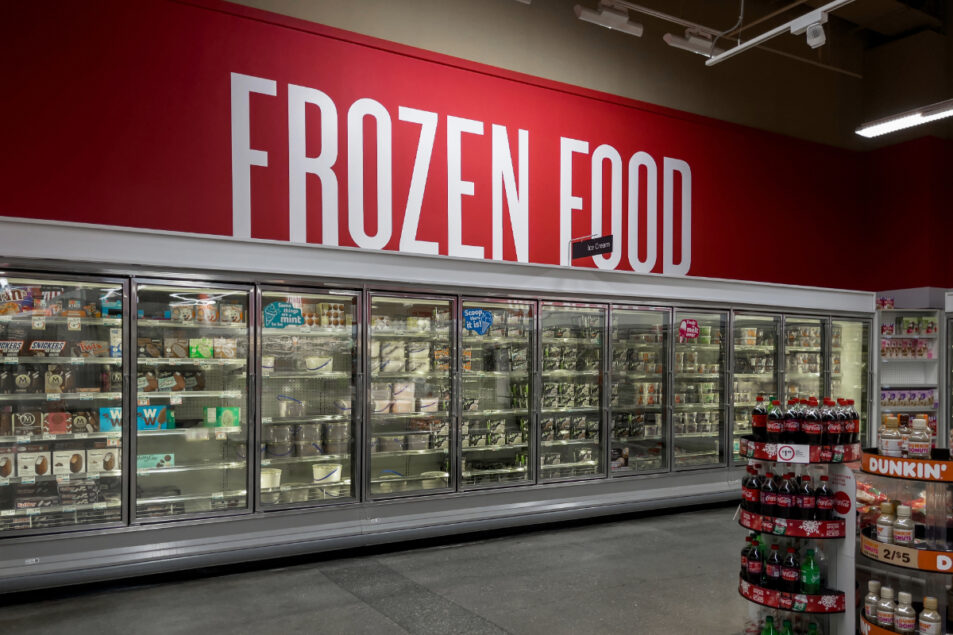
CHICAGO — Nutrition-focused formulations, global flavors and bite-size applications represent some of the key trends for frozen food during the upcoming year, according to a new report from Conagra Brands, Inc.
The second annual Future of Frozen Foods report reviewed consumer data to determine what will be the major trends shaping the category in 2025.
Frozen foods have become a significant market ($91.3 billion) as consumers seek convenient and versatile offerings for all day parts, with a 54% increase on frozen food spending in the 52-week period ended Nov. 3, 2024. Frozen meal applications serve as the largest segment, with 32% of all frozen food sales. Ice cream and frozen novelty products are the most frequently purchased, and air fryer-friendly frozen foods have become a fast-growing segment, reaching $6.1 billion in 2024.
Healthy options have become a focal point for consumer interest, with “modern health” occupying the report’s No. 1 spot. The modern concerns include areas like portion control, gut health and better-for-you benefits. For instance, prebiotic and probiotic gut health claims have increased 33% over the past three years, driven by product launches across the frozen breakfast and novelty segments. Better-for-you offerings have gained traction in the frozen dessert aisle. Non-dairy offerings and vegan products are appealing to Gen Z and millennial attitudes and preferences, and sugar-free options are resonating with older consumer groups.
Megan Bullock, director of predictive science and strategic insights at Conagra, also pointed to the introduction of GLP-1 medications as something the company has paid special attention to.
“There’s a lot of new exciting trends happening in the world of modern health, but really the biggest one that we dealt with is the introduction of GLP,” Bullock said. “When we study the actual behavior, we really see (GLP-1 users) gravitating to a lot of these frozen solutions, specifically single-serve meals, portion control, high protein, high fiber.”
Bullock said there are also opportunities in frozen food for consumers that previously used GLP-1 drugs, stating that they may turn to frozen options to maintain weight loss and a healthy eating lifestyle.
The report’s second trend, “elevated in-home experiences,” sees consumers building on pandemic trends and turning further toward at-home eating occasions. Shoppers will look for options that deliver restaurant-quality flavors while saving on preparation time.
“The prices of foodservice are quite a bit higher than making a meal at home, and that inflation continues to outpace that of in-home inflation, but folks who are eating at home still want that restaurant experience, higher quality foods, more enjoyable gatherings,” Bullock said. “So we’ve actually seen a lot of the premium price categories or products do a bit better than some of your value or mainstream solutions.”
Premium frozen side and vegetable options have done particularly well, up 3% and 11% in volume sales, respectively, versus one year ago. Also included in this trend are celebrity-inspired frozen products, such as Conagra’s collaboration with Dolly Parton, which generated more than $175 million in sales and 22% year-over-year growth.
The global cuisine trend made a reappearance from the 2024 Future of Frozen report, this time landing in the No. 3 spot. Italian, Chinese and Mexican offerings remain the most popular offerings in the frozen aisle, accounting for nearly $2.6 billion in dollar sales. Indian, Cajun and Japanese represented the fastest growing cuisines, with respective volume increases of 36%, 35% and 19% compared to three years ago.
“As global cuisine continues to grow in popularity, each generation has its own distinct preferences,” the company said. “Younger generations prefer and are more likely to purchase frozen single-serve meals with an Indian, Thai, Mediterranean, and Cajun influence. While Gen X and boomers generally prefer American dishes, they are slowly showing increased interest in Chinese cuisine.”
Global flavors in frozen street food applications have exploded over the last two years, garnering $543.5 million in sales with 26% growth. The category is led by Asian dumpling offerings, representing 70% of street food dollar sales. Among the fastest-growing global street food products are bao buns, up 583% in volume sales versus two years ago, along with tacos (54%), samosas (32%) and empanadas (31%).
The report’s fourth trend centers on convenience with bite-size and miniature frozen foods. The segment earned $2.4 billion in dollar sales and saw a 31% increase in year-over-year consumption. Gen Z and millennial shoppers are especially fond of the “bites and minis” trend, with savory options and breakfast products, such as egg bites, being among the most popular.
“This idea of a snack-oriented meal where I have three or four snacks I’ve combined to make a variety of different bites that go on one plate is growing in popularity,” said Bob Nolan, senior vice president of demand science at Conagra. “It’s almost like having your favorite appetizers from a party as your center plate.
“I think bites and minis also benefit from this halo effect … going into a consumer’s view, it is more permissible versus committing to a giant portion of something.”
Spicy offerings were identified as the report’s final trend. Heat-filled offerings hit $2 billion in dollar sales, and frozen chicken products were the most popular spicy application. The segment has resonated particularly with younger consumer groups, with Gen Z being 48% more likely to buy spicy frozen meals versus the average consumer.
“The older generation is not as familiar or comfortable with spice, but as we think about Gen Z and millennials being the future consumer, I think this is a trend that’s really important to get a hold of now and understand how to incorporate across meals,” Bullock said.
